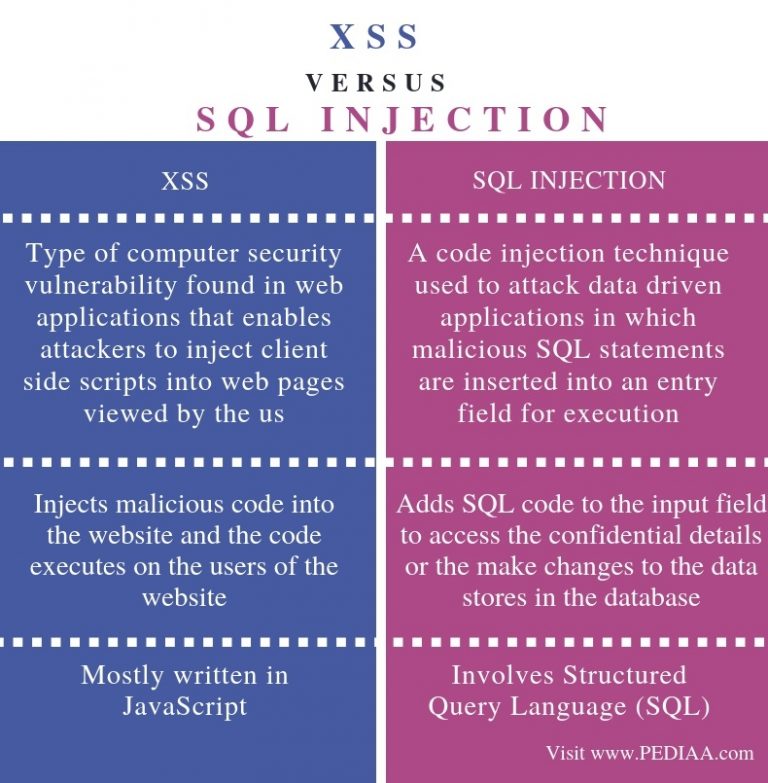monitoring solution and packet capture (PCAP) storage
The first section focuses upon proactive threat detection
Malware (known, unknown, fileless, etc.)
Exploits of known vulnerabilities
Ransomware gaining access to your computer or device, and then locking and encrypting the data stored on it
Web application attacks such as cross site scripting (XSS) or SQL injection
Business email compromise
Denial of services (DoS) attacks
Credential theft
Advanced, multi-stage attacks involving lateral movement
Insider attacks (e.g., disgruntled employees, ransomware originating from inside the network)
Zero-day exploits of new and unknown vulnerabilities
Phishing attacks
Not sure
XSS is a client-side vulnerability that targets other application users, while SQL injection is a server-side vulnerability that targets the application’s database
he main difference between XSS and SQL injection is that XSS injects malicious code to the website, therefore, that code is executed in the users of the website, while SQL injection inserts the SQL code to a web form input field to obtain access and modify data.
The second section focuses upon agile threat response —that is, the technologies and processes in place at your organization to respond to a security or ransomware incident quickly, limiting its impact.
Pay the ransom directly
Have our cyber insurance pay the ransom
Restore from our standard backup solution
Restore from an offline/air-gapped vault
Not sure
Remediate and recover from a cybersecurity event
Managed service providers (MSPs)
IT infrastructure vendors
Cloud service providers (CSPs)
Backup/recovery vendors
XSS stands for Cross-Site Scripting. It is a common website attack that is capable of affecting the website as well as the users of the website. Attackers commonly use JavaScript to write malicious code in XSS. The code can steal user’s cookie details, change user settings, display various malware downloads and many more.
